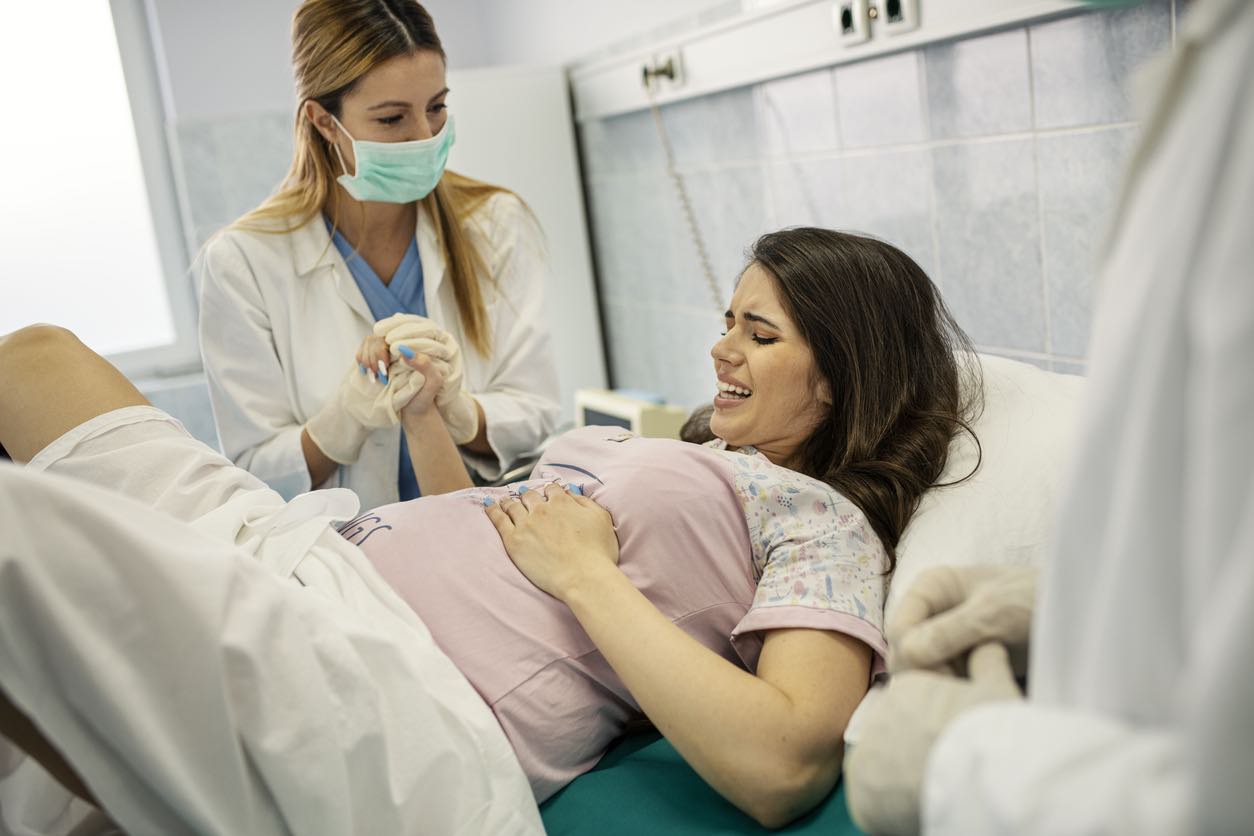
Key facts
- Contractions are when the muscles of your uterus (womb) tighten and then relax during labour.
- They help open the cervix and move the baby down the birth canal.
- Braxton Hicks contractions are practice contractions that don’t open the cervix.
- You can take a warm bath or shower or use a heat pack to relieve the discomfort of contractions.
- If you are giving birth in a hospital or birth centre, you may be offered medicines or epidural anaesthesia to help ease any discomfort.
What is a contraction?
Contractions refer to when the muscles in your uterus (womb) tighten and then relax.
During a contraction, your uterus tightens in order to dilate (open) your cervix (the neck of your womb). Contractions also help move your baby downwards during the first stage of labour.
Contractions can occur at any time during your pregnancy, but you are unlikely to feel them early in your pregnancy. Contractions become stronger, more regular and more painful once you are in labour.
Contractions can feel like a wave that starts at the top of your uterus and moves downwards. If you put your hand on your abdomen during a contraction, you will feel your abdomen become hard, and then soften as the contraction ends.
Contractions become more frequent and intense as labour progresses. You will feel the pain ease between contractions. Contractions continue until your cervix dilates to about 10cm — wide enough for your baby to be born.
What do contractions feel like?
People experience contractions in different ways. They can start off feeling like period pain or cramps in your lower abdomen. You may experience dull lower back pain that doesn’t go away, or pain in your inner thighs that you feel down your legs.
At first, your contractions may be short and up to 30 minutes apart. As your labour continues, your contractions will get stronger and closer together. Your contractions will eventually last for up to a minute and come every 2 to 3 minutes.
What are Braxton Hicks contractions?
Braxton Hicks contractions can happen throughout your pregnancy, but you may not notice them until your second trimester. These are contractions that help the uterus prepare for labour, but don’t open the cervix. Braxton Hicks contractions are sometimes called ‘false labour’. This is because they can be strong and may feel uncomfortable, but don’t lead to labour and birth.
There are ways to tell the difference between Braxton Hicks contractions and ’real labour’. Unlike real labour, Braxton Hicks contractions will stop if you change your position or have a warm shower. Real labour won’t stop if you do these things.
| Braxton Hicks contractions | Contractions (real labour) | |
|---|---|---|
| irregular and short (usually lasting for 30 seconds) | may start as irregular, but will become regular and last longer as they continue | |
| usually uncomfortable but not painful | usually more painful as they progress | |
| walking does not make them stronger | walking may make them stronger | |
| lying down may make them go away | lying down does not make them go away | |
| do not get stronger | get stronger as they progress | |
| do not get closer together | get closer together as they progress |
What should I do when contractions start?
When your contractions begin, you don’t always need to go straight to the midwife clinic or hospital. If you are comfortable and have had a normal pregnancy, you can stay at home and rest while you are in the early stages of labour. If you are having a homebirth, call your midwife to let them know you have started having contractions.
Go straight to the hospital or where you plan to give birth if:
- your waters break (note the time, colour and amount of fluid)
- your contractions become painful and regular (2 or more contractions in 10 minutes)
- labour has begun and your doctor or midwife has advised you to go to hospital early
- you are in labour and have planned a caesarean birth
- you have a known medical condition that means you will need close monitoring during labour
- there has been a change in your baby’s movements
What happens if I start having contractions too early?
If you experience contractions or other signs of labour before reaching week 37 of your pregnancy, call your midwife or doctor for advice and go straight to hospital.
Babies who are born before week 37 of pregnancy are considered premature. Many people who have early contractions do not give birth prematurely, but if this occurs, you should seek advice from your midwife, doctor or local hospital.
How do I time my contractions?
Time your contractions from the beginning of one contraction to the beginning of the next contraction. You should also measure how long your contractions last. You can use a watch, clock or a contraction timer app to help you.
In real labour, your contractions will become more regular and the interval between them will become shorter. In false labour, your contractions will remain irregular and eventually stop.
Real contractions last for about 30 seconds at the beginning of labour and will then become longer and stronger, lasting up to 75 seconds. False labour contractions vary in length and strength.
How can I ease the pain from contractions?
There are a few ways to ease pain during contractions.
Non-medicine strategies include:
- spending time in a warm bath or pool
- applying hot and/or cold packs on your abdomen or lower back (whatever is comfortable for you)
- warm showers
- acupuncture
- massage, hypnosis and other relaxation techniques
There are also medicines that your midwife or doctor can give you to help ease your pain during contractions. Some examples include:
- nitrous oxide gas (an inhaled pain reliever)
- morphine (a medicine injected under the skin)
- epidural analgesia (medicine injected into the epidural space in the spine)




